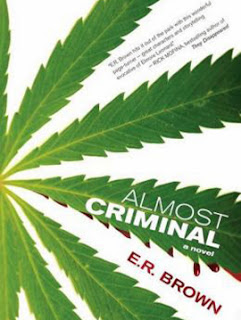Since, The Swellers have managed to remain mostly relevant in pop punk circles, producing several albums that were good enough to keep them alive but never establishing a clear trajectory. Surviving in such a state is never easy, especially given the number of label shake ups and line-up changes the band has endured.
The truth is that they almost didn't endure, which is what led to the DIY release of Running Out Of Places To Go and a seven-month near hiatus. The EP, released last year, gained just enough traction for No Sleep Records to take notice and give the band some new ground. The result is a short, compact album.
The Light Under Closed Doors is their best showing since Ups and Downsizing.
The new album plays out at a surprisingly brisk pace, blowing through all ten track in less than half an hour. Most tracks play under the three-minute mark. The longest closes in on four minutes.
"This record feels a lot different than anything we've done,” says Jonathan Diener (drummer). “The way the songs were written, the way it was recorded, even the artwork all have this organic feeling about them. We went back to basics and let the songs and emotion do the talking for us."
What has changed is the sturdiness of the sound. What hasn't changed is the desperation of the band. And the biggest takeaway from the album is that The Swellers have found a second wind with the Diener brothers and Ryan Collins (guitar) and Anto Boros (bass). It's a sharply produced and punchy album.
The best place to start is at the top with Should. The track is a good foreshadow for the rest of the album. The lyrics are simple and honest, setting a show-opening pace for the band. This is followed up immediately by Big Hearts, which is considerably rawer in its vocals and instrumentals.
Skipping over Get Social, High/Low drops down into a more methodical pace, with some pronounced Weezer influences. Nick Diener had even sent the demo of the song to get on the Weezer cruise.
The song is sad and eerie, something the band was able to capture without a budget. Much of it was filmed in Fenton to accentuate the suburban imagery and fairy tale forests. It's also named after a side project that the Diener brothers were working on before circling back to The Swellers.
Knowing this gives the meaning a different spin. In total, four of the tracks were meant to kick off a new side project before they decided the material was really meant to help the band find new footing.
They find that with a bit more originality in the punkier Great Lakes State. This track, perhaps more than any other, convincingly delivers a real sound, as if the band simply stepped into a room and knocked out what was in their heads.
"The feeling of writing and recording our EP was incredible, so we wanted to do something similar for this record,” adds vocalist/guitarist Nick Diener. “You can nod your head through the whole thing. Marc Hudson [Saves The Day, Taking Back Sunday] did an amazing job capturing what I feel is the first record that sounds like us in a live setting."
The Light Under Closed Doors By The Swellers Unlocks 6.8 On The Liquid Hip Richter Scale.
Also check out the underrated but lyrically-smart Becoming Self-Aware, alternative rock-orieinted Friends Again (We Can't Be), and settled closure of Call It A Night. The latter isn't great, but it's a great glimmer of personal for a band opening up a new chapter.
You can pick up the The Light Under Closed Doors by The Swellers from Amazon. The album can also be downloaded from iTunes or order the vinyl from Barnes & Noble. Another interesting update from the band reveals that they booked 46 shows in 44 days simply by letting fans invite them over to local venues. Pretty cool. Check their schedule on Facebook.
![Liquid [Hip]](https://blogger.googleusercontent.com/img/b/R29vZ2xl/AVvXsEjAFBQPqS7J0-rrttNoRYSsuwIePPZf4Nq6sqDioK1zzVQXJIQXKzq_NVNI4n6h3inuRQFBKOcJeZeSufkdHHIOxbSWyBjTjTxgKEQGyPzdwvkEEeECh4bI5YEGk4RWGUINSd7vulPQsCA/s1600-r/liquidhip.jpg)






























